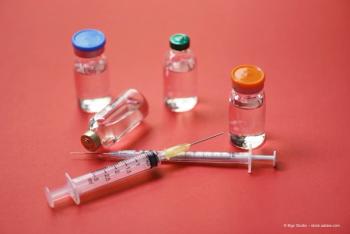
Low-dose atropine drops: Positive impact on myopia progression
The use of 0.01% atropine eye drops reduced the progression of myopia in children over the 1 year study period with no significant changes in near vision and pupillary size.
Atropine 0.01% eye drops decreased myopia progression in children over the study course of 1 year,1 reported Isha Sharma, MD, and colleagues from the Department of Ophthalmology, University College of Medical Science & Guru Teg Bahadur Hospital, Delhi, India.
They conducted a randomized trial to study the efficacy of low-dose atropine for preventing myopia progression by comparing the mean changes in the spherical equivalent and axial length to a control group and evaluated the drug’s effect on the near vision, pupillary size, and keratometry and pachymetry values at 1 year.
Both eyes of 100 children with myopia were randomized to either treatment with low-dose atropine drops once a day before bed or a control group that was treated with placebo. The 2 groups were matched for age and sex. The patients were evaluated every 3 months over the course of 1 year at which times the changes in the spherical equivalent and axial length were measured. The investigators also evaluated the near vision, pupillary size, and the keratometry and pachymetry values at each follow-up visit.
The researchers reported that the mean changes in the spherical equivalent refraction and axial length were significantly lower in the atropine group compared with the placebo group (0.31 ± 0.55 diopter [D] and 0.11 ± 0.22 mm versus 0.80 ± 1.65 D and 0.23 ± 0.44 mm, respectively). The differences reached significance, (P = 0.003).
The atropine group also had less steepening of the corneal curvature (0.16 ± 0.28 D versus 0.29 ± 0.3 D; P < 0.001). The mean changes in pachymetry were comparable between the groups (0.00 ± 0.01) (P = 0.489).
The atropine drops did not cause significant changes in the near vision or the pupillary size. Dr. Sharma reported that 96% of the eyes treated with atropine had no change in near vision; 2% of the eyes had a 1-line change in near vision (P = 0.500); and 2% had a 3-line change in near vision (P = 0.07).
They authors concluded, “The use of 0.01% atropine eye drops reduced the progression of myopia over the study period of 1 year with no significant changes in near vision and pupillary size. No patient reported any systemic and local side effects with administration of 0.01% atropine eye drops.”
Reference
1. Sharma I, Das GK, Rohatgi J, et al. Low dose atropine in preventing the progression of childhood myopia: a randomised controlled trial. Curr Eye Res. 2023;48:402-7; https://doi.org/10.1080/02713683.2022.2162925
Newsletter
Keep your retina practice on the forefront—subscribe for expert analysis and emerging trends in retinal disease management.










































